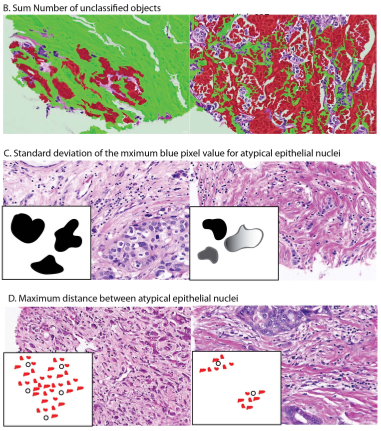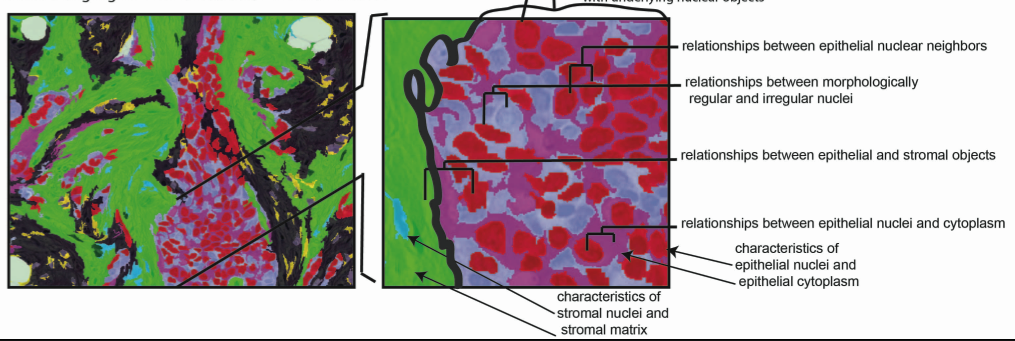 | Systematic Analysis of Breast Cancer Morphology Uncovers Stromal Features Associated with Survival
Andrew H Beck, Ankur R Sangoi, Samuel Leung, Robert J Marinelli, Torsten O Nielsen, Marc van de Vijver, Robert B West, Matt van de Rijn, Daphne Koller |
| Welcome to the web supplement to the paper:AH Beck et al., Systematic Analysis of Breast Cancer Morphology Uncovers Stromal Features Associated with Survival, Sci. Transl. Med. 3, 108ra113 (2011). | Abstract | | The morphological interpretation of histologic sections
forms the basis of diagnosis and prognostication for cancer. In the
diagnosis of carcinomas, pathologists perform a semiquantitative
analysis of a small set of morphological
features to determine the cancer's histologic grade. Physicians use
histologic grade to inform their assessment of a carcinoma's
aggressiveness and a patient's prognosis. Nevertheless, the
determination of grade in breast cancer examines only a small set of
morphological features of breast cancer epithelial cells, which has
been largely unchanged since the 1920s. A comprehensive analysis of
automatically quantitated morphological features could identify
characteristics of prognostic relevance and provide an accurate and
reproducible means for assessing prognosis from microscopic image
data. We developed the C-Path (Computational Pathologist) system to
measure a rich quantitative feature set from the breast cancer
epithelium and stroma (6642 features), including both standard
morphometric descriptors of image objects and higher-level contextual,
relational, and global image features. These measurements were used to
construct a prognostic model. We applied the C-Path system to
microscopic images from two independent cohorts of breast cancer
patients [from the Netherlands Cancer Institute (NKI) cohort, n = 248,
and the Vancouver General Hospital (VGH) cohort, n = 328]. The
prognostic model score generated by our system was strongly associated
with overall survival in both the NKI and the VGH cohorts (both
log-rank P < 0.001). This association was independent of clinical,
pathological, and molecular factors. Three stromal
features were significantly associated with survival, and this
association was stronger than the association of survival with
epithelial characteristics in the model. These findings implicate
stromal morphologic structure as a previously unrecognized prognostic
determinant for breast cancer. |
|  |
|

